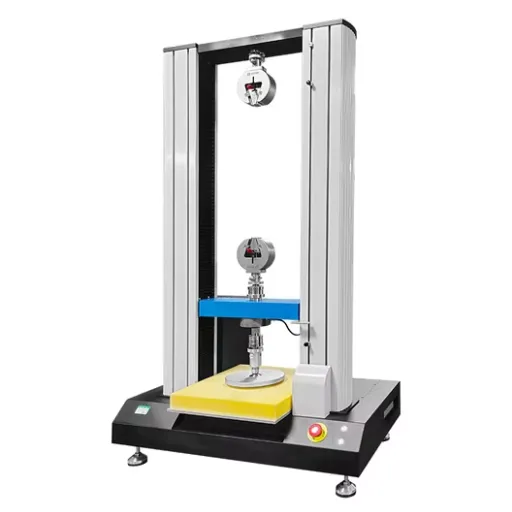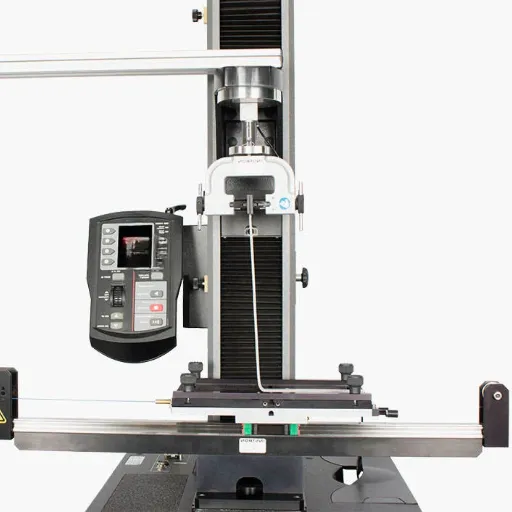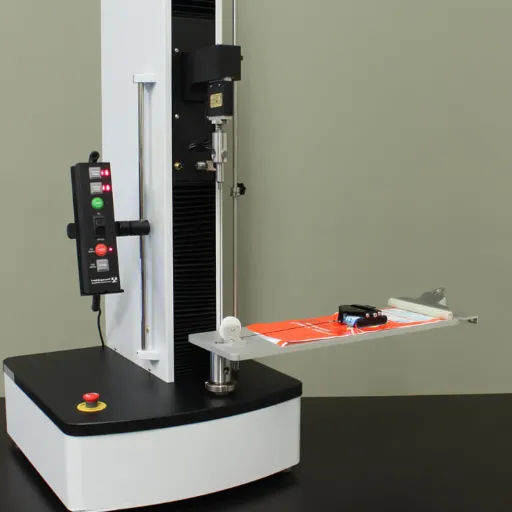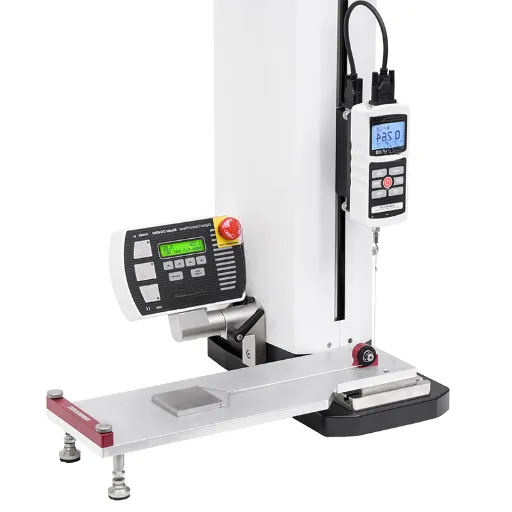Knowing the mechanical characteristics of a material is important in understanding for what purpose it may be used. For rigid plastics, one of the most important mechanical properties is compressive strength, as it directly influences the performance as well as the durability and reliability of the plastic when used in challenging conditions. ASTM D695, the standard test method for compressive properties of rigid plastics, addresses this need. This article explains the scope of ASTM D695 testing, its rationale, its method, and its role in rational material selection for design and manufacturing. No matter if you are in quality control, engineering, or production, this article will explain the rationale and methodology of compressive testing as per ASTM D695 in a way that you will find useful.
Introduction to ASTM D695
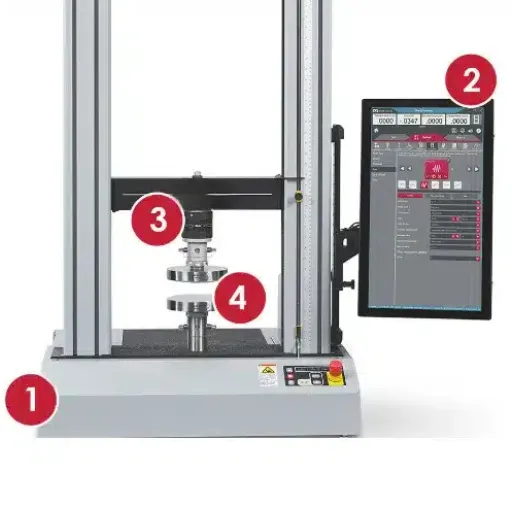
Overview of ASTM Standards
ASTM standards are technical documents recognized internationally and established for the purpose of promoting the quality, safety, and reliability of materials, products, systems, and services. These standards ensure that industries have consistent and accurate processes to follow for testing methods, material specifications, and performance measures. Such standards are set by an organization known as ASTM International, which also functions as a platform for gathering professionals in the relevant fields for updating and creating the standards to ensure they are in line with the needs of the modern industries.
ASTM D695 specifically addresses the compressive properties of rigid plastics. The standard provides criteria for the determination of the behavior of plastics under compressive loading, including the measurement of such properties as compressive strength, modulus, and strain. When such standards are followed, materials can be assessed by consistent methods to determine their appropriateness for certain applications and compliance with regulatory or final use requirements.
In product development and quality assurance, ASTM standards like D695 are very influential. Because of the standards, manufacturers and designers are empowered to weigh materials and designs with appropriate information, hence products that perform better, higher trust in the market, and innovation coupled with safety and dependability are more assured.
Importance of Compression Testing
When we talk about compression testing, we think about the different materials we use in our day to day activities. Compression testing helps us asses strength and elasticity of a material to understand if the material will be able to withstand a load without giving out. Such testing is absolutely critical and necessary in construction, the automotive industry, and the aeronautics industry.
For engineers and manufacturers, the results from the compression tests serve as a guide when it comes to choosing materials to use with their designs. With such testing, manufacturers can see through the potential failure points in the materials and improve on the composition or structure to meet the performance criteria. In addition, there is the aspect of industry standard compliance, which such tests help validate, and the products are therefore certified to be safer and more reliable.
Finally, compression testing is integral to innovation and product development. In testing materials, researchers are enabled to develop materials and structures that are stronger and more efficient. Such data is also important in optimization design and contributes to eco-friendly practices and enhanced quality of products.
Application of ASTM D695 in Industry
In industries where the compressive properties of materials matter, ASTM D695 is indispensable. The test is effective in determining strength, deformation, and failure characteristics of materials like rigid plastics. Knowing a material’s behavior under load is critical for deciding whether the material is fit for use in load bearing and structurally stable applications.
One of the most notable industries in which ASTM D695 is used is the construction industry. Materials that will be used in beams, panels, and other structural materials undergo testing using methods such as ASTM D695. This enables manufacturers to have products that comply with safety standards and optimized performance. Understanding material behavior and ensuring compliance helps in the reliable usage of such materials.
Moreover, the ASTM D695 is of great importance in the product design and manufacturing processes. The automotive, aerospace, and electronics industries depend on this method for the selection of optimal materials that ensure the durability and efficiency of the end-use applications. The data received from the tests enables innovation since research is driven towards locating materials with better compressive properties to enable the development of safer, more sustainable products, and more engineering, overcoming modern challenges.
Understanding Compression Testing

What is a Compression Test?
A compression test is one of the mechanical tests employed to find out a material’s behavior when subjected to compression forces. It turns to be quite useful while trying to ascertain the condition of being crushed or the behavior of the sample when subjected to squeezing. These tests prove useful in assessing properties such as the compressive strength, elasticity, and deformation.
Generally, the sample is placed between the plates of a testing machine, and a force is slowly increased until the sample deforms or breaks. Sensors record data for the applied force and displacement; this information is used in determining the properties of the material. Metals, plastics, ceramics, and composites are common materials tested.
Testing against compression finds much use in industries such as construction, automotive, and aerospace to ensure that the materials comply with safety and performance standards. Because engineers and designers can evaluate how materials behave under pressure, they can select appropriate materials for products that will function well in actual applications.
Key Terms in Compression Testing
- Stress: Stress is a force applied to a material per unit area on which this force acts, expressed usually in pascals (Pa). Understanding stress application helps in determining the response of the material toward the applied loads.
- Strain: Strain is a measure of deformation, expressed as the ratio of change in some dimension to its original dimension. It is a non-dimensional quantity indicating the amount by which a material stretches or compresses under an applied stress.
- Elastic Limit: The elastic limit is the stress value beyond which permanent deformation occurs. Below this limit, a material is capable of returning to its original shape once the external load is removed.
- Yield Strength: Yield strength occurs when a material undergoes plastic deformation-a transition from elastic behavior to permanent deformation.
- Ultimate Compressive Strength: This is the highest-level grade of compressive stress imposed on a material, above which it cannot stand without failure and breaking. It is a common method of stating the material’s ability to withstand extreme loads.
- Modulus of Elasticity (Young’s Modulus): This is the stiffness of the material under compression, i.e., stress to strain ratio for an applied load within elastic deformation range.
These terms are vital for furthering understanding and communicating compression testing results in aid of enabling industries to design safer and more efficient applications.
Types of Materials Tested
Compression testing is conducted on a variety of materials to determine their mechanical characteristics and potential applications. Said differently, we can go with the greater divisions of materials tested:
-
Metals:
Metals such as steel, aluminum, and copper are frequently subjected to testing under compression to assess their compressive force and resistance. These properties are essential to the measurement of metals relative to their allowed use in construction, automotive, and aerospace industry where materials are subjected to loads of high magnitude without distortion or fracture.
-
Polymers:
Plastics and other polymer materials are tested to specify their behavior concerning compressive stress. Such information is used in product designs involving components, packaging, and furniture, which need precise strength and flexibility to work well.
-
Ceramics and Composites:
Ceramics are regarded as brittle materials and were evaluated for their resistance to cracking in compression. These materials were applied in certain areas, including electronics, medical devices, and aerospace, given that they afforded strength and lightness.
By putting the different materials under the experimental compressive loadings, industries gain the capability to choose the best candidate for applications and thereby accomplish safety, durability, and efficiency in engineering design.
ASTM D695 Test Method
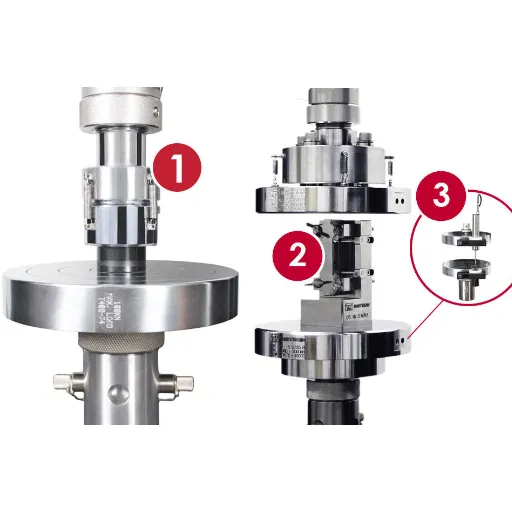
Overview of the Test Method
ASTM D695 is the test method for determining compressive properties of rigid plastics. It covers a systematic approach to testing materials in uniaxial compression for key features such as compressive strength, modulus, and strain. These properties consider how a material behaves under load, rendering the test extremely essential where load-bearing applications come into play.
The test involves getting the specimen into a definite shape, usually cylindrical or prismatic, as defined by the standard. The specimen is finally subjected to a progressively increasing compressive load using a mechanical testing machine under controlled conditions. Measurements are taken to determine the compressive stress and strain, thereby directly indicating how the material fits or fails in service.
Ensuring such consistency and reliability in test results is a hallmark of ASTM D695 when implemented by industry sectors. The method allows the comparative testing and selection of materials with decisions based on engineering or design. The procedure’s standardization guarantees reproducibility-all of which go into quality control and the verification of materials in practical and diverse applications.
Preparation of Specimens
Specimen preparation is essential to ensure accurate testing results using ASTM D695. To start, specimens must be machined or molded to standard dimensions as per ASTM D695. Generally, considerations are made for uniform cross-sections and proper alignment to prevent anomalies and irregularities from affecting the test results. Materials must be accepted into the procedure without defects such as cracks or voids to get compatible and reliable results.
Next comes a thorough inspection followed by conditioning of specimens as per the standard. Usually, the conditioning entails exposure to predetermined environmental conditions of temperature and humidity to allow the materials to acclimate. Thus, this prevents external factors from impinging upon the results and establishes a solid ground on which comparisons may be positioned. Proper conditioning of specimens is important to achieve test repeatability and validity.
In the last step, it is necessary to confirm that the specimens are firmly fitted within the testing apparatus. During the process, maintain calibration of all equipment per ASTM D695 specifications. Proper alignment of the specimen in the apparatus is essential as any misalignment force may invalidate the compressive strength readings. These preparation steps thus ensure tests of accuracy and reliability so that informed material selection and engineering decisions can be undertaken.
Testing Procedures and Equipment Requirements
-
1
Initial Specimen Selection
The compressive strength test must be performed systematically. Initially, from the specimens obtained, those that meet the dimensions and material standards specified in ASTM D695 are selected. Specimens displaying any visible flaw such as cracks or any irregularities should not be tested because these defects would affect test results. The conditioning of each specimen should be done as prescribed by the standard to obtain consistent results.
-
2
Test Setup and Equipment Calibration
Next, the test setup should be arranged, and all equipment, especially the universal testing machine, must be calibrated on or within the range of the specified parameters. A compression testing machine should apply a pressure with uniformity and gradualness. It is important to check the alignment of the specimen in the test setup since improper specimen positioning will distribute forces unevenly and cause untrue results. Testing should be performed in a controlled environment to ensure that factors such as temperature or vibration do not affect the outcome.
-
3
Data Recording and Calculation
Lastly, note down the maximum compressive loading before failure of the specimen, and from it, calculate the compressive strength by dividing the loading by the cross-sectional area of the specimen. Report these results, along with any notes on deviations and/or observations made during the testing. Hence, if these test procedures and equipment requirements are rigorously implemented, one can obtain reliable and reproducible data required for further material evaluation and engineering decisions.
Compressive Properties of Rigid Plastics
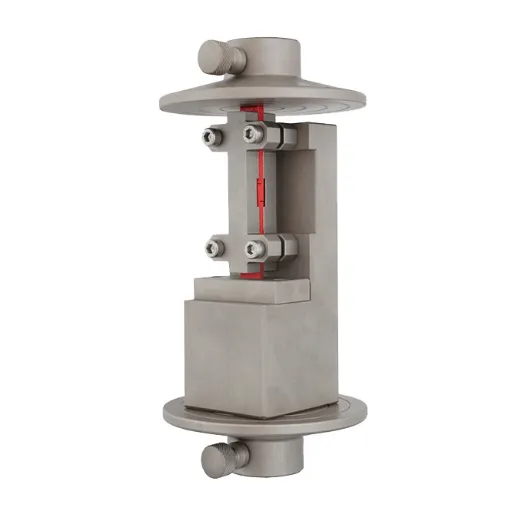
Defining Compressive Strength
Compressive strength refers to the capacity of a material to resist forces that tend to decrease its size. A compressive load is applied to a sample, and the maximum stress it can bear up until failure is recorded to define this parameter: in brief, method of failure. It is a performance parameter considered in rigid plastic materials toward load-bearing applications.
A sample of predefined cross-sectional area is placed in a testing machine, where a load is steadily applied upon it. The load is recorded at the time of maximum deformation or fracture of the sample. The maximum load divided by the cross-sectional area gives the compressive strength.
This property is required in areas where materials undergo compressive loading, e.g., in construction and structural components. Having a deeper understanding of compressive strength ensures that materials are chosen correctly to safeguard and guarantee the intended performance of particular engineering designs.
Modulus of Rigid Plastics
The modulus of rigid plastics, also known as the elastic modulus or tensile modulus, measures the stiffness of a material. It quantifies the plastic’s ability to resist deformation under tensile or compressive stress. Rigid plastics often exhibit high modulus values, which make them suitable for applications requiring dimensional stability and structural integrity.
This property is determined through tensile testing, where a material is subjected to controlled forces to measure its response. The modulus is calculated as the ratio of stress to strain in the linear portion of the stress-strain curve. Higher modulus values indicate stiffer plastics, while lower values suggest more flexibility. Common examples of rigid plastics with high modulus include those used in construction, automotive parts, and industrial components.
Understanding the modulus of rigid plastics is crucial in engineering and material selection. It ensures that the chosen material can withstand the expected loads and maintain its shape without excessive deformation. By analyzing this parameter, engineers can design safer, more durable structures and products for a wide range of applications.
Factors Affecting Compressive Properties
Compressive properties of rigid plastics are governed by some important factors that go by their constitution, structure, and environment. One of the foremost factors is the polymer structure of the material and so is the extent of crystallinity. Plastics with a high degree of crystallinity usually exhibit higher compressive strength, as an orderly arrangement of molecules resists compressive forces.
The second important factor is the additives and fillers available in the plastic. Additives such as reinforcements or stabilizers can improve the compressive properties by increasing the overall stiffness and durability of the material. Fillers such as glass fibers are quite effective at increasing compressive strength, especially where heavy applications of loads or pressures are involved.
Up until very recently, the full range of factors influencing the strength of materials under compression may not have been entirely understood. Environmental factors-temperature and moisture exposure-are of prime importance. High-temperature exposure decreases compressive strength due to softening of the material. Loss of strength occurs in moisture absorption in some plastics by altering the molecular structure. If the interaction of these factors can be understood, the engineer can select or modify a material that is suitable for a specific compressive demand in an application.
Benefits of ASTM D695 Compliance
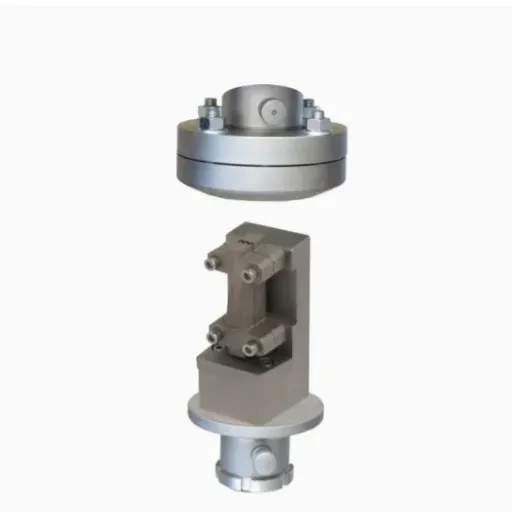
Improved Product Reliability
Adhering to ASTM D695, which stands as the standard test method for compressive properties of rigid plastics, ensures reliability and that materials are, according to ASTM standards, performing and acting within the strict parameters with which they are tested. By knowing a material’s compressive strength, modulus, and deformation behavior, a manufacturer can discern whether a material is fit for a specific application under speeds of expected load. This, therefore, lessens the chance of material failure in the end product.
Materials designed in ASTM D695 standards are less apt to deform under compressive company forces, crack, or even break down. This will simultaneously boost the reliability perceived by users and increase maintenance costs reduction over time. Attesting to the resistance of ASTM-grade materials against adverse environmental factors, for example, temperature fluctuation or moisture levels, will deliver performance longevity in harsh environments.
Testing according to ASTM D695 standards also aids the engineers’ choice of material during the design. With trustworthy data on compressive properties, the design teams can better match materials to the product for individual use. Consequently, the manner of developing a product might attain higher efficiency, and at the same time, the quality should stay uniform, which leads to satisfying customer requirements and regulations.
Enhanced Safety Standards
Enhanced safety standards are important in maintaining reliability and performance of materials under various conditions. By following thorough testing procedures, manufacturers can spot any problem areas in materials and take corrective action to prevent their failure. Standards like ASTM D695 serve to compare materials against pre-existing strength and durability requirements, enabling products to perform safely under pressure.
Such standards also enable an industry to prevent risk throughout the life of a product. Due to accurate compressive properties data attained during testing, companies may take into account situations when a material can undergo extreme stress that may lead to an accident. A more conscious selection and testing of materials will clearly improve the safety of the final product, both in terms of consumers as well as operators.
Finally, in prioritizing safety standards, trust is created and thus the whole regulatory requirement is complied with. Industries that comply with these criteria almost all of the time, or exceed them, demonstrate an assurance of quality and promise of consumer protection. Not only will customer satisfaction be maintained thanks to this, but products will also remain intact when they are used for vital applications. This, in turn, secures some amount of confidence in giving the industry a good name in the long run.
Streamlined Industry Compliance
Streamlined industry compliance assures organisations functioning with an efficient and systematic approach to regulations. Given precisely tailored regulations or guidelines to create processes and frameworks, these industries could err less, delay less, and avoid penalties associated with non-compliance. In this way, organisations are not used in the conduct of the illegal and might have better resource utilisation and lower operational costs.
Of course, a strong element behind streamlined compliance would be the elimination of quality-product and inimical-service consequences. Regulation-based working environment narrow down the chances of making inconsistent and quite unreliable outcomes. Thus, customers develop a stronger feeling of trust for these industries together with long-term loyalty that would build upon negative and positive reputation in the market.
Innovation and business growth invariably coincide with compliance hurdles. Today, many automation tools make compliance more efficient and speedier. By employing new-age tools and technologies that streamline their regulatory compliance processes, businesses can now secure approvals swiftly, respond faster to new market demands, and maintain their competitive positions. A compliance perspective is not just about legalities; it also builds a ground for sustainable and ethical industry practices.
Frequently Asked Questions (FAQ)
Q: What are ASTM standards for compression testing?
A: ASTM standards for compression testing provide the agreed test methods for determining the compressive properties of materials, such as rigid plastics and metals. They provide reliability and consistency to testing, thereby ensuring the assessment of material behaviors under compressive load.
Q: How does ASTM D695 hold relevance for compression testing?
A: ASTM D695 offers the test method for compressive properties of rigid plastics. It entails the preparation of the test specimen, the use of compression platens, and the measurement of compressive strength and modulus of elasticity, inhibitory to any inaccuracies or variabilities in results.
Q: What significance does a stress-strain curve hold in compression testing?
A: The stress-strain curve plays a very important role as it shows the interplay between the compressive stress and strain during the compression test. From its analysis, we can arrive at the yield strength, the ultimate strength, and the behavior of the material under compressive loads-all important design considerations in material selection.
Q: What kinds of materials can be subjected to compression testing according to ASTM standards?
A: ASTM standards state that compression testing can be carried out on both rigid and flexible materials. These include both unreinforced and reinforced plastics, metallic materials at room temperature, and composites, covering a large gamut of materials for examining their behavior under compression.
Q: What equipment is usually used in ASTM compression testing?
A: A universal testing machine is generally used to perform ASTM compression testing. This is a machine fitted with compression platens and fixtures that hold the test specimen firmly under compressive load, allowing accurate measurements of deformation and compressive strength.
Q: How does the diameter of the specimen affect compression test results?
A: The diameter of the specimen will greatly affect the test results in compression testing. With a larger diameter, the compressive load may be more evenly distributed, thus allowing failure modes caused by buckling or shattering fracture to affect most probably the measured compressive properties.
Q: Are ASTM compression testing standards applicable to composite materials?
A: Yes, ASTM compression testing standards do apply to composite materials and, therefore, testing on high-modulus composites. The procedures are designed to ascertain the compressive properties and performance characteristics of these materials that are important in applications across various industrial areas.
Q: Under ASTM standards, what does “compressive modulus” stand for?
A: The compressive modulus is the slope of the stress-strain curve within the elastic range of deformation during the compression testing. It represents the stiffness of a material when it is loaded and compressed and is one of the key parameters that ASTM standards like ASTM D695 assess.
Q: How does ASTM D695 relate to ASTM D638?
A: ASTM D695 and ASTM D638 are two Standard Test Methods that usually address the mechanical properties of plastics. Whereas, ASTM D695 considers compression testing for rigid plastics, ASTM D638 considers tensile testing. Both methods are crucial to correlate different properties of materials under distinct load conditions.
Q: How are the failure modes assessed in ASTM compression testing?
A: The failure modes of compression testing by ASTM are assessed by observing the manner of failure of the test specimen under compressive loads. Buckling, yielding, or compression by shattering fracture are common types of failures. The test method outlines the criteria for determination of the modes, which are very much useful in understanding the material limits and safety considerations.
References
- Standard Test Method for Compressive Properties of Rigid Plastics – ASTM
Focuses on determining the mechanical properties of unreinforced and reinforced rigid plastics. - ASTM D695: Compression Test for Plastics & Composites – ZwickRoell
Describes the compression test for mechanical characteristics like Young’s modulus and strength. - ASTM D695 Compression Testing Rigid Plastics – Instron
Details the ASTM D695 standard for compressive properties of unreinforced and reinforced plastics. - ASTM Standards – Instron
A comprehensive resource for various ASTM standards, including those for compression testing.

